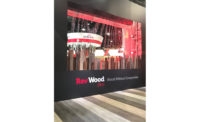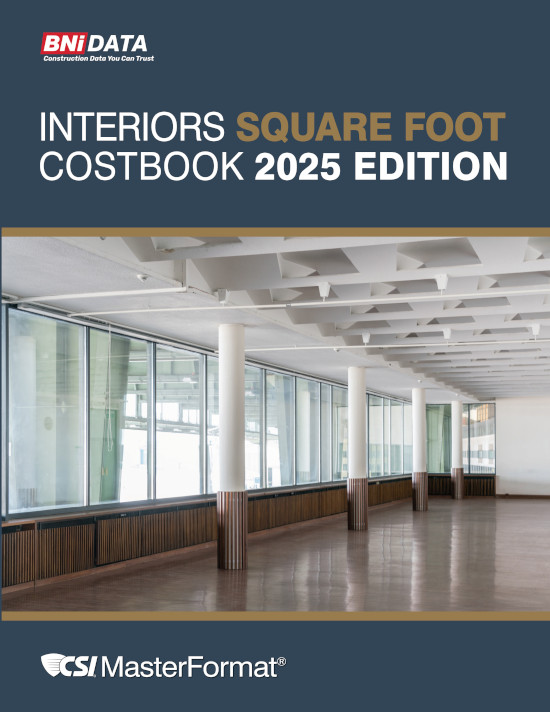The New Year ushers in new trends in interior design. As always, Floor Trends is not only looking at what’s ahead in terms of design, but specifically what designers and manufacturers believe the year has in store for flooring.
2018 Trends Forecast
Simplicity and Comfort
In 2016, we saw the emergence of hygge, a Danish word used to describe a feeling of coziness. Pronounced “hueguh”, hygee’s influence followed us into 2017, where we continued to create moments worth remembering and naming in all aspects of our lives, including the home and interior design.
“People really have adopted the word,” said Pamela Rainey, head of Shaw’s residential soft surface product design team. “There’s no translation in English, but what it requires is being present and recognizing a moment that feels very cozy and special. It’s so special that you have to name the moment. It brings a lasting feeling of comfort and happiness.”
According to Rainey, with hygge’s influence on design, people are eager to entertain in the home again, rather than meeting at restaurants. And with that, the floors in homes are getting more use both practically and aesthetically.
As we enter 2018, hygee’s influence on design is joined—or in some opinions, replaced by—the Swedish word lagom, which means just the right amount. “For consumers, this means practical, a balance of life and all things in moderation,” said Sara Babinski, design manager–hardwood, Armstrong Flooring. “This could mean a little bit of downsizing; simplicity in decorating with blonde woods, calm patterning and sophisticated earth tones.”
Metroflor’s director of design, Robert Langstaff, predicts that sustainability and biophilia will become major focal points for 2018. “In flooring, if newer upscale homes have floor to ceiling windows for better vistas using natural sunlight—a biophilic design element—the floor becomes more important. You’ll find people will use one flooring material throughout the first level of a multilevel home, to unify it, and plank looks will be a big part of that design, as wood is a natural neutral and visually comforting.”
Through hygee and lagom, or a combination of the two, designers project that consumers will continue to desire more comfortable and cozy yet practical designs in their homes in 2018, right down to the floors, and manufacturers will be supporting these simplistic design concepts through both hard and soft surface introductions this year.
Hard Surface
Hard surfaces and wood looks reigned supreme in 2017, according to the design professionals we spoke to. From LVT to WPC, varieties of wood looks were a much sought-after trend on the floor last year.
“We continue to really focus on hardwood and wood visuals across all categories,” said Joe Amato, Mannington’s vice president of residential styling. “It seems like right now, anything around wood is doing absolutely fantastic. I think it’s also being supported by the wood visuals that you are seeing in porcelain tile as well. As I look at the wood category itself and wood visuals, as I look at what we’ve been doing and what we will be doing into next year, it’s around three groups of visuals.”
According to Amato, those groups include refined rustic looks, cleaner visuals and the morphing of wood and stone looks to create something more abstract.
“Refined rustics were big in 2017, but we are starting to grow naturally and gradually into the cleaner visuals and the abstracts,” Amato said. “They are starting–we’re seeing them–but they will probably be more prominent moving into 2018.”
In 2018, designers say we will continue to move away from the heavy, deep, gouging of wood in rustic looks as we see wood visuals morphing into a cleaner, more refined look, which is a trend that is heavily influenced by today’s hottest wood species, Oak.
“That’s being driven by the hottest species right now in real wood and imitated wood which is your Oak visuals,” Amato said. “They naturally don’t have to be as rustic, but they can still have a lot of nice character, knots and mineral streaks, but definitely not as rustic.”
To achieve these looks with the help of technology, planks will continue to get longer and wider, says Amato. “What we are seeing in technology today, especially in the LVT category, is that if you want to emulate the look of what’s popular in real hardwood in terms of format, you have to find technology to get you wider and longer LVT plants to mimic the look of real wood. We are seeing technology start to create up to 8-inch-wide planks and 72-inch-long planks just as you would see in real wood.”
This demand for longer, wider planks will continue to be seen across all hard surface categories, says Rainey. “For hard surface in general, wood visuals are still very, very strong. Some of the changes we see are the continuing interest in longer, wider planks no matter what category you’re in; whether it’s in hardwood, whether it’s in laminate, whether it’s in ceramic of whether it’s in resilient. That’s a trend that we see continuing on.”
But as homes get smaller from room to room, manufacturers are not losing sight of the design capabilities that only a narrow, more classic plank can deliver. “Planks will continue to go wider, but old style is back in style and the classic 2.25” and 3.25” strip and plank will see an uptick in popularity,” said Babinski.
Amato adds, “As we go in to 2018, we are working on some wood products that are actually going narrow again. When you go narrow you are also now focusing on other formats that are becoming in vogue again, meaning chevron layouts and herringbone layouts. So, we are seeing more design on the floor today using wood visuals.”
Making a statement on floors, these unique designs are replacing the need for elaborate rugs. “Diagonal and herringbone patterns are on the rise again,” said Dave Murphy, training director for N-Hance Wood Refinishing. “These unique angles and patterns can be used to really make a statement. Hardwood floors are a well-known must-have item for homeowners, but sprucing up flooring with subtle textures and patterns can easily modernize a room while making the home more attractive on the market.”
In residential applications, designers are also reporting that homeowners are doing away with wall-to-wall carpet, and opting for hardwood in rooms that we traditionally saw soft surface flooring in. “An overwhelming amount of our residential projects using hardwood flooring call for wood to continue into the bedrooms, as opposed to the old notion that bedrooms have to have a soft surface,” said designer Christopher Grubb, founder and president of Los Angeles-based Arch-Interiors Design Group. “As a result, wall-to-wall carpeting for these spaces is being left behind.”
Soft Surface
On the other hand, Rainey says that in creating this feeling of coziness, the need for soft surfaces will remain. “People naturally spend more time of the floor,” she said. “So, we think to create this feeling of coziness, they are going to need more soft surface. So even though you have these hard surface floors, you’re going to need some soft surface to entertain on.”
According to Rainey, the idea of soft surface has changed. “In the past, we used to think soft surface would start at the front entry and move all the way through the house, but that’s not happening any longer. There are certain areas where soft surface is the preferred flooring. We also see interest in patterns in certain areas like the dining area or going up the stairs in a common hallway. We do see medium sized patterns being of interest in those types of spaces.”
Through varies sizes and patterns, designers foresee carpet tile being used in exciting new ways this year. “I think that carpet squares will be big in 2018 because a lot of consumers are wanting to change up their look every few months or years, and this makes it easy and simple to do so,” said designer Ashley Marino of Ashley Marino Designs. “Without purchasing anything new, you can rearrange your carpet squares to a new pattern or shape. By replacing just a few of them, you’ll be able to change the entire look of the rug for a fraction of the cost. Their versatility is what makes them shine.”
Whether you are incorporating hard or soft surfaces into a space this year, as always, color will play a key role in design. “Whether you decorate with warm minimalism or bold maximalism, color plays a roll,” Babinski said. “Incorporating color into the floor creates a delicate accent to work your room around with coordination and accents of those colors.”
Announced late last year, Shaw’s highly anticipated 2018 color of the year, Gold Rush, compliments the projected color trend this year of warm neutrals.
“One of the things that we feel is important is that our colors of the year all build upon each other,” said Rainey. “So, it’s not like we are telling consumers that you have to throw out everything and start all over. We really work hard to say, ‘ok, here’s how you can bring your interior up to date.’ Maybe you already have gold carpet; let’s add in some accents.”
According to Shaw, the warm neutral celebrates the return of gold to the home after grays and other cool palettes have held the design spotlight for years.
But not to be forgotten, gray is not being replaced, just warmed to match this year’s color trends, the designers say. “Because of my projected resurgence of calming and modern colors, I think that gray will be the go to neutral for a lot of homes in 2018,” Marino said. “Using gray rather than beige as a base neutral immediately brings new life into the home and makes it feel current. Gray wood floors are a love of mine, and I think that they’ll be getting their moment in 2018.”
With access to design tools like Pinterest and Instagram at the palms of their hands, Rainey sees the continuation of the educated consumer continuing to impact design choices in 2018. “To me that’s the biggest influence on design right now and especially when you’re talking to retailers because many consumers have spent so much time researching their inspirations, researching specific products that a lot times they come in with their own board and say, ‘this is the look I want, what do you have like this?’ It’s a much more educated consumer that our flooring retailers are working with.”













